Predator: Killer of Killers Review: Deserved to Go Out to the Cinema | Hulu
We have already had you read our review of Predator: Killer of Killers, the animated film directed by Dan Trachtenberg and Joshua Wassung, which streams on Hulu and Disney+ three years after Prey and a few months in advance of Predator: Badlands. The latter, unlike those already mentioned, will bring the Yautja saga back to the big screen seven years after The Predator, Shane Black’s 2018 feature film. In the analysis we mentioned, inevitably making sibyllic to avoid any kind of spoiler, like this Predator: Killer of Killers is both a sequel (of Prey) and a background (of Badlands). In addition to, in a broader sense, a new addition to a science fiction lore inaugurated in 1987 with John McTiernan’s masterpiece interpreted by Arnold Schwarzenegger in its heyday. Now it’s time to go much deeper into what the main links of Predator: Killer of Killers are to the other chapters of the franchise.
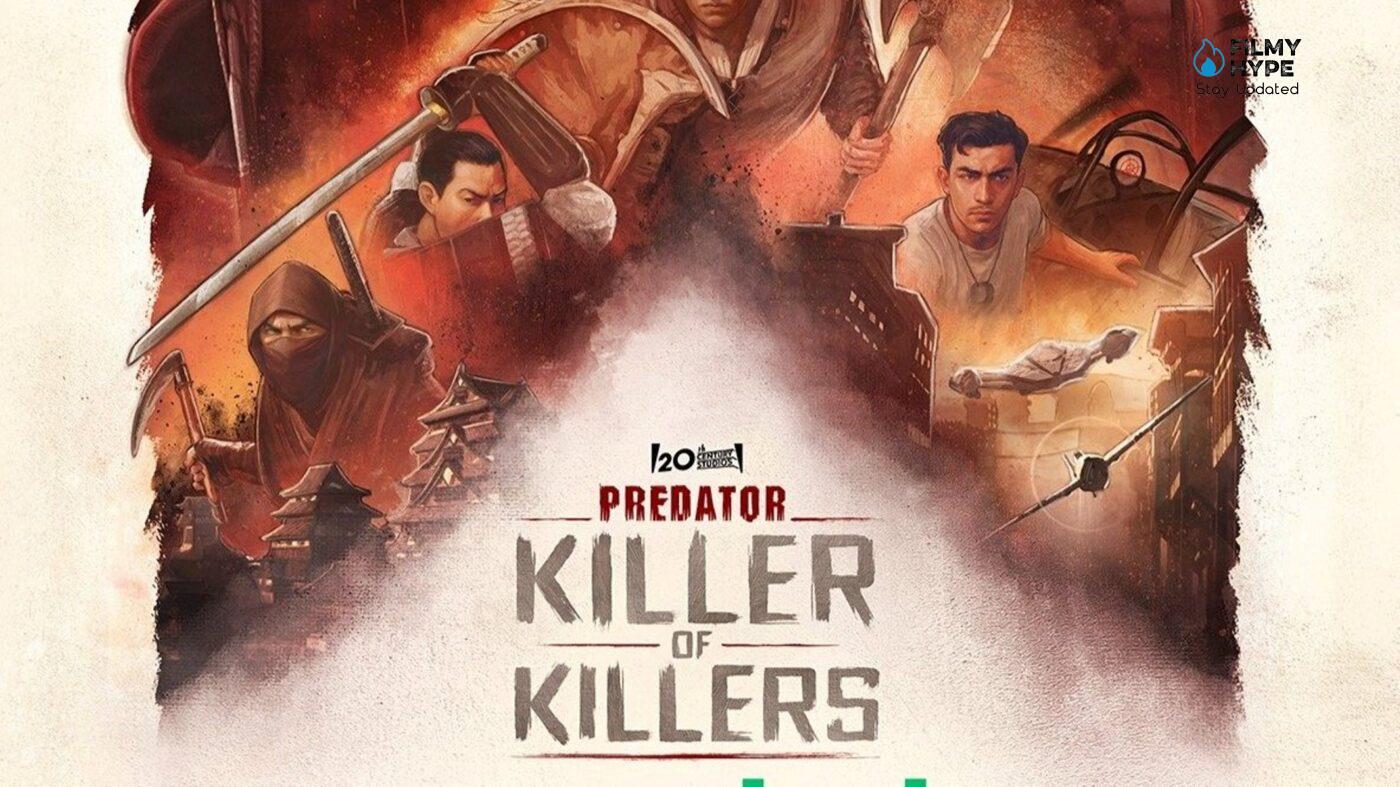
Who knows if, even a handful of years ago, even the best fortune teller in the world could have predicted 2025 as the moment of the potential definitive revival of the Predator franchise. Even after the welcome Prey (here you can recover our Prey review), getting to this point, or two films coming out a few months later, seemed at least implausible to us. Yet here we are, discussing Predator: Killer of Killers, the franchise’s first animated feature film and always directed by Dan Trachtenberg, now almost the deus ex machina of the series, which we have been able to preview and which debuts on Hulu and Disney+ on June 6. An experiment in all respects, which continues along the lines of Prey, especially for its extreme simplicity, without particular tinsel or secondary storylines. But unlike Naru’s misadventure, Predator: Killer of Killers, it binds much more viscerally to the previous chapters, thus telling a story, without, however, renouncing certain elements back in the middle and mixing them with the right sagacity. The result? A film that flows with a remarkable pleasantness, which captures all the sensations that Predator should give back, apart from a single point that we have sincerely found out of place.
Predator: Killer of Killers Review: The Story Plot
Predator: Killer of Killers is an anthology film divided into four chapters that explore the theme of revenge. The first part, entitled Lo Scudo, is the protagonist Ursa, a Viking warrior, daughter of a chief tribe, killed by the leader of another clan. His life is guided by the desire of his father whispered on the verge of death: avenge me. At his side is Anders, the son, apparently unable to take the life of another human being, but when a Predator appears on the battlefield, the situation becomes complicated for all parties on the field. In the second chapter, La Spada, the film catapults us into Feudal Japan, during the childhood of two children of a nobleman, forced to fight each other to identify the designated heir. We find the defeated Kenji several years later, recognizable by the scar on his cheek, who has now become a samurai, ready to demand his revenge from his brother.
The silent ambush, however, resolves into tragedy, and the contemporary assault of Predator will stain with blood the snowy streets of the village. The time jump of the third chapter is instead remarkable: we find ourselves in the middle of the Second World War, together with Torres, a US aviator who notices the presence of an unidentified aircraft in the attack area of his squadron. Torres arrives just in time for the appearance of the huge ship of the Predator. All three episodes end with a short ed enigmatic scene, whose meaning is revealed in the fourth and final episode that unites the threads of the previous ones and opens up new perspectives for the saga.
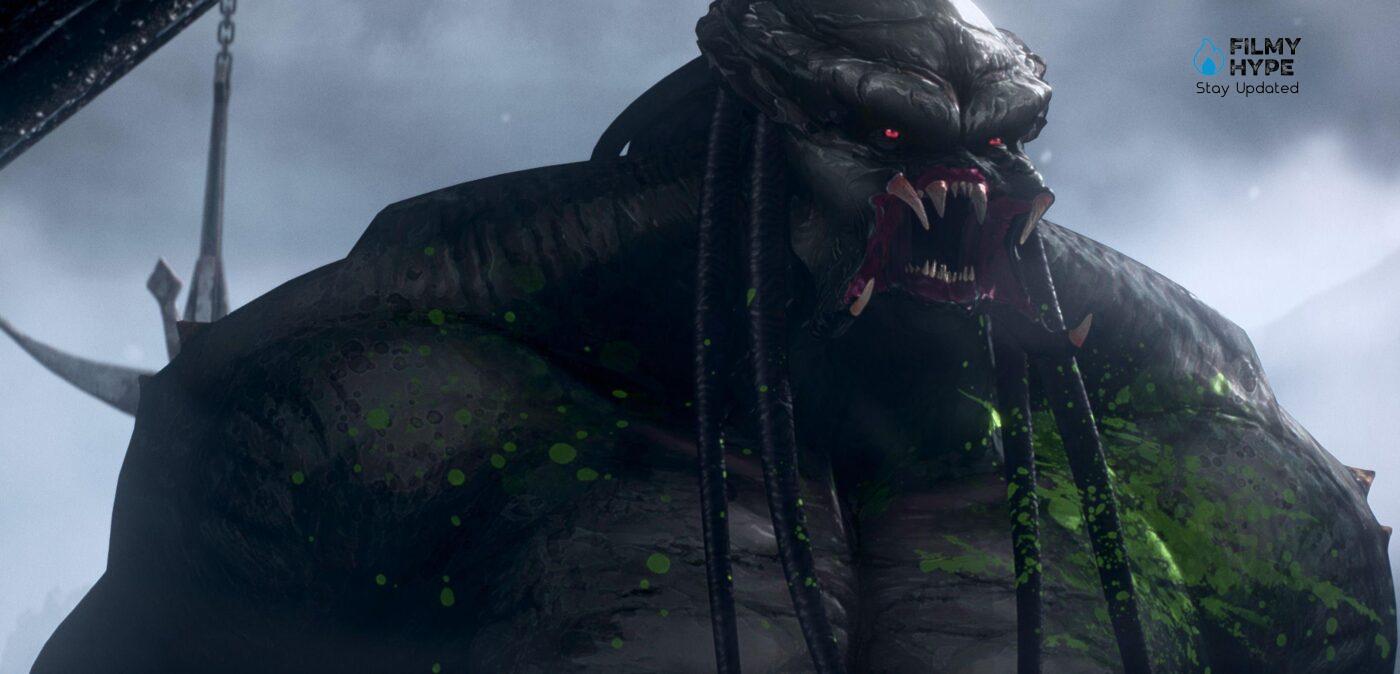
Three stories, three characters, three warriors who, during their battles, face Predator‘s terrible alien threat. So let’s get to know a Viking warrior looking for revenge with his son, a samurai driven out and dishonored by his family, and an aviator on duty in the army during the Second World War. All three will be targeted by the alien warrior by waging a bloody battle with him. An episodic structure, therefore, which slowly converges towards an even more final adrenaline. And it is thanks to this narrative structure that Predator: Killer of Killers succeeds in telling something more on the screen about the iconic character, his world and his “ethics”, while not giving up on the action, indeed, pushing hard on violence and on compelling and dynamic fights that effortlessly achieve the goal of entertaining the viewer, always keeping their attention high. There are no dead moments, and everything seems to have been built to tell Predator through the eyes of the co-protagonist characters, making it that lethal presence and evanescent being who loves to strike by surprise. Three figures, perhaps a little stereotyped, but written with the sole purpose of convincingly facing the terrible and unexpected threat.
Predator: Killer of Killers Review and Analysis
As usual with productions of this type, we find ourselves having to walk on a minefield where every misstep could make some mine made of spoilers explode. Already with the title of this paragraph, we may have said too much, but we wanted to take a minimum risk. Why is it a sequel? And why a background? And what? To you, the taste of discovering it. That said, Predator: Killer of Killers continues on that path that Dan Trachtenberg started to travel with Prey, a film that at the time was shot in secret without revealing that it was a real relaunch of the Predator saga. The information, which the director would have liked to avoid revealing, was released by Disney shortly before the streaming debut of the feature film. A respectful restart path based on a vision that, as will also be evident for you after seeing Predator: Killer of Killers, is truly an overview. There is a speech that is being carried out and that seems to interest the director a lot, and is based entirely on the exploration of the warrior customs of both the Yautja and us human beings.
In Prey the most interesting intuition was to put a young Comanche in front of each other who, more than a healer, is interested in becoming a warrior without having a shred “know-how” on the subject and a Predator more … primitive, in some ways, than the others we had learned to know. In addition to being inexperienced, he takes them from a wolf, from a bear, and is almost bitten by a snake despite the optical camouflage. In Prey, the concept of prey is relative. Predator: Killer of Killers chooses the path of animation to broaden to three historical periods very distant from each other, the history that links the alien race to planet Earth with a bloody, brutal, direct, and useless history that keeps glued to the screen for all its 90 minutes in duration. Probably, given the narrative choices made, if you had opted for a live action story it would have taken a budget of 200 million to be able to bring home the result and it would not have been a wise decision in a historical context where, to fail commercially, we also find the kolossal cinefumectics of Marvel Studios.
As legendary as it is, Predator‘s is a niche populated, moreover, by people now “elderly ”.The most intelligent way to work on sagas of the eighties, whose success in 2025 is far from obvious, is that of cost containment, so this animated chapter is welcome, which also serves as a reminder of the film coming out of the cinema in early November, Predator: Badlands. Film that, moreover, seems to live in the same universe as Alien, among other things. And if in Prey it was the concept of prey that was questioned, overturned, here it is that of Predator: who is the Predator of whom? The answer to this question lies in an animated film which, by quality of direction, staging, and art direction, would have deserved the big screen just like Prey. A story that flirts with extreme elegance with the tradition of the Predator saga while paving the way for new, possible developments. Some may say that the references and quotes present are a limit that circumscribes Predator: Killer of Killers to a well-defined audience niche, which is true. But it must also be said that those who start to know this story through it can find answers to all the hypothetical questions that could arise during the vision on Hulu and Disney+, at a distance of half a click. Dan Trachtenberg continues to prove that he knows what he is doing. In a few months, we will find out if he will live up to the saying “there are no two without three”. That’s okay for the moment.

With “Predator: Killer of Killers”, Dan Trachtenberg creates a small audiovisual jewel that will surely make fans of the saga happy. The filmmaker, with this film, brings significant innovation within the franchise, without betraying its cinematographic essence. At the center of the narrative remains the hunting of Yautja towards humans, the omnipresent element also in this first animated feature film of the franchise. However, Trachtenberg does not just re-propose the classic dynamics of the saga, but expands, opening the story to new dramaturgical horizons with a strong sci-fi flavor. The goal of the filmmaker and screenwriter is to broaden the narrative by introducing new elements which allow, in the future, to diversify the stories while keeping the primary narrative structure intact — il man-alien conflict. This evolution promises to constantly surprise the public with innovative and unexpected, just like it happens with “Predator: Killer of Killers”.
The film is configured as a feature purely of gender, without marked thematic subplots, but capable of revolutionizing the franchise. The time travel of the yautja, introduced, and the ending of the film suggest new narrative directions, capable of unhinging the dramaturgical repetitiveness that has characterized the franchise so far. Moreover, “Predator: Killer of Killers ” has the merit of showing, for the first time in the world of cinema (outside of comics), the hometown of the yautja, offering one split on their fighting culture—elements never explored until 2025, and which, I presume, will be investigated again in the films following this film, perhaps precisely through a direct sequel to this animated feature film. The film, unlike what happened in the franchise until 2025, is structured like an anthology feature, presenting to the public three stories set in completely divergent periods. Interestingly, Dan Trachtenberg had already explored the past of the saga with his first 2022 film.
The first story, entitled “The Shield”, transports us to 841 AD, in a Viking world marked by death and violence. At the heart of the story is the vindictive struggle of Ursa, daughter of Einar, who, together with his army and her young son Anders, intends to take revenge on Zoran of Krivich, the cruel warrior who exterminated her family when she was still a child. In this freezing and hostile environment, Ursa ignores that fate will lead her to clash with one of the most formidable fighters in the galaxy: an alien of the Yautja race. With rudimentary weapons and protected only by a wooden shield, the Viking woman will have to fight to survive, giving rise to a clash to the death. The narrative develops around one suggestive aquatic component, culminating in a final duel set under a frozen lake, where strategy and endurance are intertwined in a high-voltage climax. The second story, set in 1609 in Japan, immerses us in a story of brotherhood and revenge. Two brothers, once deeply united in childhood, find themselves as adults fighting against each other, moved by grudges from the past. Upon the death of his father, the two face each other in a duel, sword in hand, but their struggle is suddenly interrupted by the arrival of a yautja fighter.
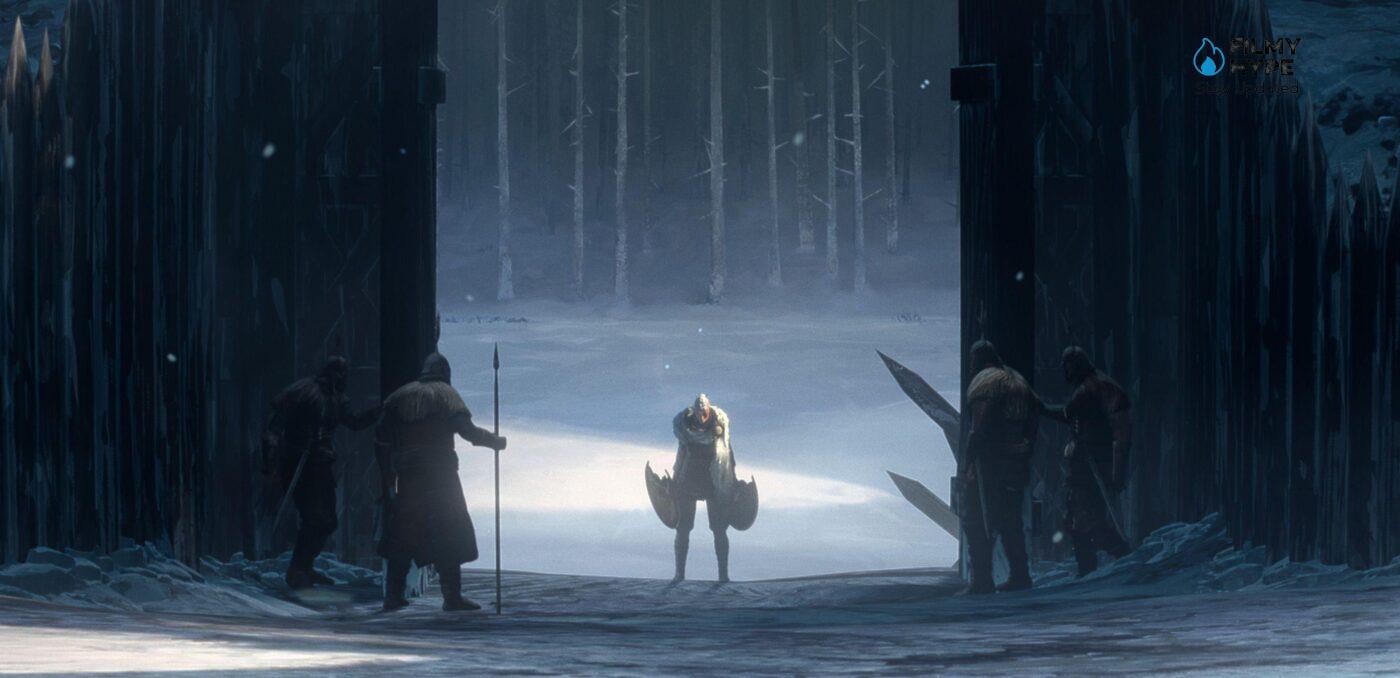
Now, forced to put hostilities aside, they will have to join forces to defeat the alien monster that has come to eliminate them. If the first story can be defined as one marine narration, with his final fight under a frozen lake, this second story takes place entirely on the mainland, while the third is a story of air, set almost exclusively in the skies. In the story “The Bullet”, we follow the events of a young South American with the dream of flying a plane. In 1941, during the Second World War, the boy finds himself fighting against French forces, but his mission takes an unexpected turn when an alien ship invades the airspace, sowing destruction among its troops. Despised by many who doubted his flying skills, the young man becomes the only pilot able to face the extraterrestrial enemy. Eventually, all three stories will intertwine through the time travel, but I won’t reveal how, not to take away the pleasure of finding out for yourself. The three stories share different structural elements, starting from an almost total absence of dialogue, especially in the second narrative, in favor of large fighting scenes, which constitute the heart of the film.
It is a feature film with strong adrenaline pathos, in which the viewer attends to continuous clashes, with bodies facing each other, alien and otherwise. The film fits into this kind of action, without neglecting its component horror, which emerges strongly in the first story, undoubtedly the darkest and bloodiest. All three events also have a ’video game-style animation, although less refined than that of “Arcane”. Initially, some movements slightly slowed down and closer to the videogame aesthetic that cinematic could make the nose turn up, but with the continuation of the vision, this technique manages to capture the viewer, thanks to the incredible visual details, both in characters and in settings. Undoubtedly, the protagonists are not fully in-depth or original, following various genre film canons. However, likely, the writers did not focus on the originality of the characters, but on their iconicity, so that they would stay memorable in the viewer’s mind, and in this, they have succeeded fully.
Returning to the animation of Predator: Killer of Killers, we realize how this is a visual journey that crosses different styles, adapting to the narrative tone of each of the three stories, with a rougher and sweeter musical direction and composition according to the moments and the story being told. The first story, The Shield, presents an animation raw and intense, with decisive features and a marked use of shadows to emphasize the brutality of hunting and the inhospitable landscape of the year 841. The colors are cold and desaturated, contributing to a dark and fierce atmosphere, with a strong contrast between lights and shadows that amplifies the sense of tension and despair. The aesthetics here are illustrative and almost expressionist, where the distortion of forms serves to enhance the emotionality of the characters and the violence of the clashes. The technique used seems to combine CGI and 2D animation, with a strong use of motion capture to ensure fluid and realistic movements.
In the second story, The Sword, the animation changes drastically, adopting a more fluid and cinematographic style. The stroke softens and the use of light becomes less dramatic, with colors warmer and more realistic, able to convey a certain sweetness, especially in the initial scene. The scenes have a pictorial quality, with digital brush strokes that accentuate the movement and elegance of the fights, reflecting the very theme of the story, which revolves around the honor and technique of Japanese fighting art. The absence of clear shadows and the chromatic balance give a sense of realism and refinement that contrasts with the brutality of the first narration.
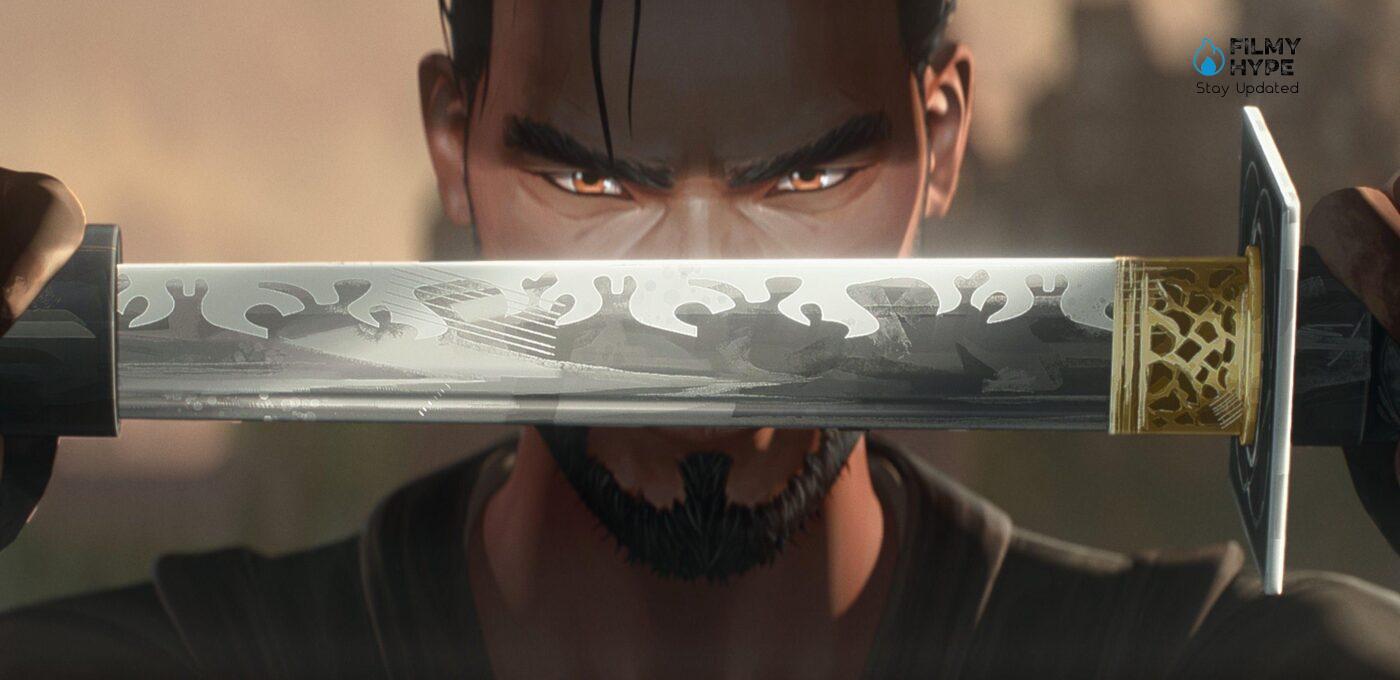
The third story, The Bullet, represents a further stylistic change, moving towards an aesthetic more graphic and stylized, with strong contours and colors less natural and more desaturated. Here, the animation embraces a visual language almost from the graphic novel, with a strong contrast between shaded areas and illuminated areas, giving a sense of tension and fatalism. The trait is more angular and cleaner, almost evocative, transforming each image into a powerful and symbolic visual composition, where the dynamism of the action merges with a more essential chromatic choice. The technique used here seems more oriented to CGI with pictorial effects, emphasizing visual drama through more stylized forms.
This stylistic evolution between the three stories is not accidental, but serves to clearly distinguish the themes and atmospheres of each story. While the first story underlines the brutality of the survival and ferocity of the Predator, the second explores, in Japanese style, elegance and technique, while the third accentuates the drama of destiny and inevitable confrontation. This visual approach, combined with different techniques for each section, makes Predator: Killer of Killers a unique experience, where each story has its own visual identity that reinforces its narrative message. This aesthetic and technical variety contributes to the depth of the film and enhances its visual impact. As for animation, the result is quite good, although not excellent. While proposing one animated style interesting and contemporary, Predator: Killer of Killers in some moments he does not allow himself to fully exploit the medium, even if on the whole the fluidity in the animation of the fights and the search for spectacular choreographies soon make the viewer forget all those small technical smudges perhaps the result of the first approach with this medium.
If you are looking for pure action, blood, and a compelling plot, then this film is definitely for you, whether you are a fan of the character or less. We urge, however, all those who already know Predator, to also look at his animated incarnation looking for references and elements of the films of the past preparing for what will come, or Badlands, always directed by Dan Trachtenberg. Polish your weapons, refine your intellect because the ruthless galactic killer has not yet stopped chasing us. It has already been noted that we are openly avoiding talking about the WWII pilot, are we? The reason is well explained, that is this is the Achilles heel mentioned in the introduction because he wants to recover the mood of a Top Gun or films like that (and in reality it also does well) and we, quite simply, do not believe it is an inspiration that is well linked to the idea of the Predator. In addition, the aggravating circumstance of placing a protagonist perhaps excessively comic relief, the usual character who feels obliged to chat and continually hunt for the impromptu “comic” or light observation. A clear fall in style compared to the other two episodes, however, well done.
Predator: Killer of Killers Review: The Last Words
Predator: Killer of Killers may not be the film capable of relaunching an entire franchise in all respects and with great pomp, but it is a very pleasant experiment that knows how to entertain and, in some moments, even enhance. Divided into various episodes or chapters, each one focused on a different figure in different centuries that meets despite a terrifying Predator, the first animated film of the saga can wit and stage real shorts, taking inspiration from the most disparate cinematographic strands and serials to mix them up and forge something new. An experiment that works and is even capable, far more than Prey, of taking up some elements of the franchise. Does it all work then? Not really, one episode in particular we sincerely found it so well done, but very out of focus, as if it deviates a lot from why you watch a Predator movie (without finding a valid alternative, indeed). A pleasant new entry, however, on which you can continue to create a small vein, waiting for Badlands.
Cast: Lindsay LaVanchy, Louis Ozawa Changchien, Rick Gonzalez, Michael Biehn
Director: Dan Trachtenberg, Micho Robert Rutare
Streaming Platform: Hulu and Disney+
Filmyhype.com Ratings: 3.5/5 (three and a half stars)

Predator: Killer of Killers Review: Deserved to Go Out to the Cinema | Hulu | Filmyhype
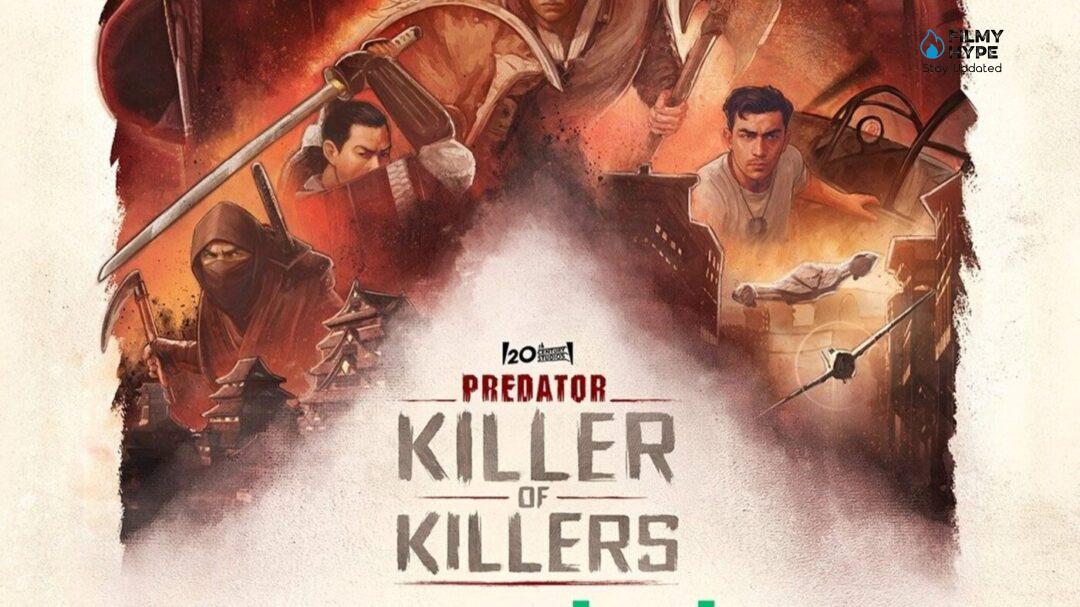
Director: Dan Trachtenberg, Micho Robert Rutare
Date Created: 2025-06-06 13:11
3.5
Pros
- Anthological structure that introduces new perspectives in the franchise
- Stylized animation with aesthetic variations between the three stories
- Intense action component with spectacular fights
- Introduction of the Yautja home planet and new narrative dynamics
Cons
- Little in-depth characters built on archetypes
- Storytelling focused on action rather than dramatic depth



